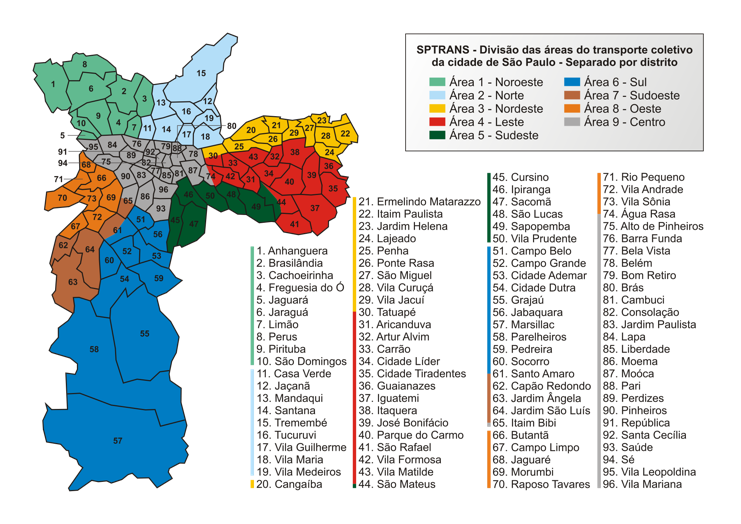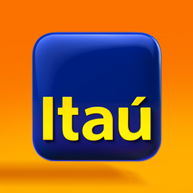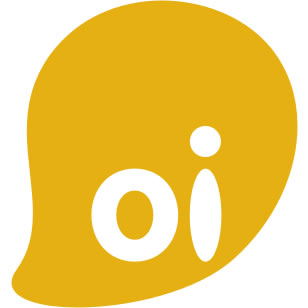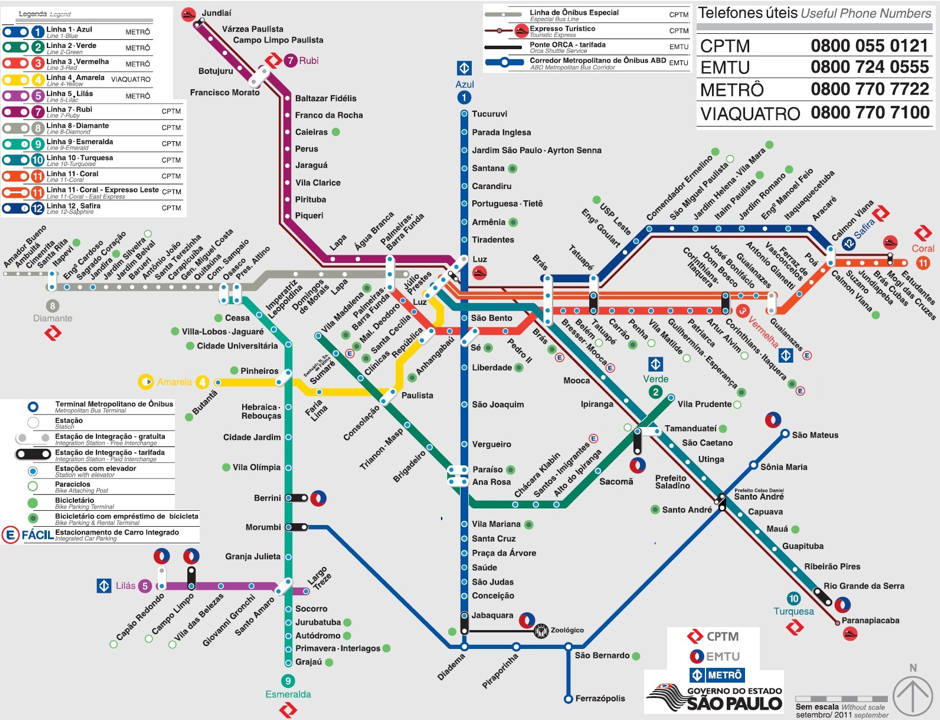Transportation:
1. Subway
Sao Paulo has a very robust subway and rail system. Though it is run by two companies, the interchanges are all integrated. Take extra caution when travelling to the far ends of the city though (mostly lines run by CTPM).
Basic fare for single ride: R$3.50
You can go to the ticketing counter and buy a single-trip ticket (just put the money through the window and the attendant will give you change and a ticket). Alternatively, purchase a Bilhete Unico (ez-link card) from any newsstand (R$13.50 – R$10 for card value). You can top up your Bilhete Unico at the ticketing booths too.
Flying Chalks’ tip: Do not bother making the student version of ez-link card (approx. half price), as you need to apply for a social security account, bank account, etc.
The buses are color-coded by region that it serves. Pay attention to the suffixes too. There is also a subway-bus service run by EMTU (mostly plying south side of Sao Paulo), their shade of blue does not count in the regional colour codes (in below map, Insper region is 61/65).
Buses per trip are also R$3.50 (you can pay cash). There is a ‘combination’ deal if you use the Bilhete Unico – one metro/CTPM/train trip + up to 3 bus trips (all within 3 hours) = R$5.45 (train must be boarded within first 2 hours).

3. Express and Intercity bus
Express and Intercity buses are the most popular option to get region to region. Take the metro to Portuguesa-Tietê (line 1) or Palmeiras-Barra Funda (lines 3, 7, 8), both of which have bus stations (rodoviaria). There is a third and minor interstate bus station – Jabaquara, but very few bus routes run there. Depending on the states you are taking bus to, you have to go to one of the two:
To see which states is served by which terminal, visit:
https://en.wikipedia.org/wiki/Tiet%C3%AA_Bus_Terminal
https://en.wikipedia.org/wiki/Palmeiras-Barra_Funda_Intermodal_Terminal
4. Intra-city bicycle
For a fee of R$10 per month, downloading a mobile app, and having a valid mobile number, city dwellers can use the Bike Sampa service offered by Itau Unibanco (orange coloured stations and bicycles). There are >100 bike stations across the city. The concept is that users simply have to go to a station, use the smartphone to unlock the bike, and cycle to the next station, and then return the bike. The app is easy to use and there are many stations plenty. Station 62 is right outside Insper.
More information: http://www.mobilicidade.com.br/bikesampa.asp
5. Taxi
Taxis are plentiful, clean, safe, and affordable. Uber and Hailo are available too. Always ensure they use the meter.
Taxi Fares (estimated, different companies may charge differently)
R$4.50 starting fare
R$2.50 per km (R$3.25 for 2000hrs-0600hrs)
R$2.50 for luggage
R$33.00 for waiting per hour
Flying Chalks' tip: Taxis in Sao Paulo (and most of Brazil) are white (except Curitiba which is orange and black). The number plates are all red, to distinguish from normal white cars.
6. Domestic flights
GRU Airport serves both international and domestic flights. In the south of Sao Paulo, there is another airport, Congonhas (CGH), which serves purely domestic flights. Taxi from Insper area to CGH costs about R$40.
Banking services:
You can open a bank account with Itaú at the Insper lower level (1st garage level). The steps are as follows:
- Register yourself as a foreigner in Brazil at Polícia Federal to obtain your RNE.
- Then, go to Receita Federal at Rua Coronel Xavier de Toledo, nº 23, 2º Andar (near Anhangabaú Metro Station), between Monday and Friday, from 8am to 8pm, and ask for a CPF (personal tax identification card) for students. The following documents are required:
- Passport
- Proof of Residence (e.g. electricity bill)
- Your RNE (the receipt you received after registering at Polícia Federal)
- After receiving your CPF, go to the Itaú branch at Insper with the following documents:
- RNE
- Passport and copy of passport
- Proof of Residence
- Letter from Insper (get it from Insper International office at level 6)
If there are instances that you need to make payment to another party, usually a business entity (such as BRASPA’s internship processing fee), the receiving party will issue a “Boleto”. Depending on the issuing bank, you have to bring to that specific bank to pay.
Flying Chalks’ tip: It is difficult to apply for a CPF account, so it might be more convenient to simply withdraw R$ cash from ATMs.
Major Banks in Brazil


3. HSBC Brasil

For more information, go here!
.png)
.jpg)
*charges a R$19.99 fee per transaction for withdrawal with foreign cards

Flying Chalks’ tip: If possible, apply for a Citibank USD account – the ATM rates will be relatively favourable for the bank’s own customers. If not, if you hold a DBS/POSB card, make sure it has Maestro and withdraw from HSBC ATMs as it gives the best rate.
Also, most ATMs close at 8pm daily and are closed the whole day on Sundays, so make sure you do your cash transactions in time.
Post office services:
Post Office is known as Correios. The one nearest to Insper is located at Av. Santo Amaro, 2197 - Vila Nova Conceição, CEP 04505-971. A full list can be found here!
Flying Chalks’ tip: Sending a postcard costs about R$3-4 (fixed fare + per kg fare). The detailed prices are located in the post offices.
Medical services:
There are many drug stores (Droga) around the city that carries international and recognised drug brands. They are easy to access and mostly suitable for foreigners. Drug stores also provide a host of services such as cellphone recharge services.
Flying Chalks’ tip: Always get a local to go to a hospital or clinic together (for consultation) as they would know the process. Avoid government/public hospitals as they might require a social security account (known as CPF). The nearest private hospital (with outpatient A&E) to Insper is Hospital Santa Paula, Av. Santo Amaro, 2468 - Vila Olimpia, São Paulo - SP, 04556-100.
Telecommunications:
There are quite a few mobile telecommunications service providers in Brazil: Claro BR, Vivo, TIM, Oi. Their stores to purchase a new phone and SIM card are easily located in most shopping centers in Sao Paulo (shopping malls are simply called “Shopping” in Portuguese).
The registration of a SIM card requires a passport or RNE (foreigner’s IC). It is good to go with a local. The plans are generally as such: (i) SIM card costs R$10, (ii) per 100 min of phone calls or 600MB of 4G data costs R$24.90 (in blocks of such). You need to top up your account using cash, so that your account will have a stored balance, then activate this stored balance for usage through the SMS system. There are expiry dates on the data and phone plans.
1. Vivo
Vivo operates its stores and its SIM cards can be topped up Droga SP+ drug stores by going to the drug store cashier and reciting your phone number. Its store staff speak the best English too.
2. Claro BR
Most of Claro stores are also in shopping malls, although the level of English varies.
3. TIM
TIM operates stores much the same as other telcos, its stores generally have the cheapest phones. It is hence a good place to buy a replacement phone without contract. English might not be available.
4. Oi
Oi is one of the telco with a less stable connection from locals’ experience.
Flying Chalks’ tip: Wifi is not always available in small local restaurants, with a larger proportion of restaurants in shopping malls that have it. Wifi availability varies by city as well. Sao Paulo, being the most developed, usually has wifi most widely available. Most areas in cities can be covered by data connection. There is wifi on intercity buses although this relies on mobile data connection.
Weather
Brazil’s climate varies according to the region. In Sao Paulo, it is similar to Hong Kong’s temperate climate. Spring, summer, fall, and winter are not very distinct but can be told.
The weather can also be rather erratic and temperature ranges are large. For instance, the noon sun in spring can be around 35°C, and then it can rain in the afternoon and drop to 23°C. Strong winds in certain parts of the city also play a part.
i. Spring lasts from September onwards, and it turns warm rather quickly, reaching tropical temperatures by October. Overcast days are common during this period.
ii. Summer lasts from October through to February or so. It is a hot and humid time of the year where temperatures can soar above 37 °C depending on the region. Brasilia, for instance, can easily hit 40°C by mid-October. Brazil’s tropical summer can also be very rainy.
iii. Autumn lasts from March to May. Temperatures still remain around summer levels while there are some cold days as well. Just like spring, it is often cloudy.
iv. Winter lasts from June/July to September, where temperatures can plunge to as low as 10 °C in Sao Paulo. Subzero climate is very occasionally experienced in the south of the country.
IMPORTANT NUMBERS | |
Sao Paulo state police | 197 |
Federal Highway Police | 191 |
Ambulance | 192 |
Fire | 193 |
Sao Paulo tourist police | 011-3214-0209 |
In general, there is a lack of English options for emergency numbers and lack of English proficiency overall. Some helpful links:
https://www.angloinfo.com/sao-paulo/how-to/sao-paulo-healthcare-emergencies
http://www.braziltravelinformation.com/brazil_safety_emergencyguide.htm



